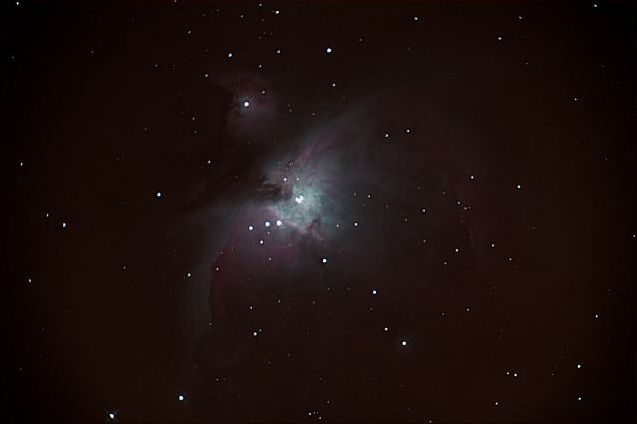

I've been impressed by the pictures obtained by others with DSLR cameras so I have been trying it for myself. However I do not have a camera from which the internal filter has been removed. This filter reduces the sensitivity of the detector in the red area of the spectrum to match that of the human eye. The result is that much of the Hα emission from hydrogen is cut out. So does this represent how the nebula would look if our eyes were sensitive enough to see the colours?

The picture was taken with an unmodified Canon 1100D camera with white balance set to daylight. It was made by combining seven pictures with exposures between 6 and 300 seconds at ISO 400 on 8 October 2016. It has had minimal enhancement in post-processing (see below for details). Move your mouse pointer over the picture to see a version in which the colour saturation has been increased by 30% to enhance the subtle colours that are there but are not clearly visible. You can see there that the main part of the nebula is blue-green in colour which is characteristic of the emission from Oxygen at around 500 nm.
Date and Time
4th October 2016 04:16 to 04:30 UT
Camera
Canon 1100D
Telescope
8-inch Ritchey-Chrétien
Capture
Canon EOS facility. Exposures 6, 15, 30, 60, 120, 240, 300 seconds at ISO 400
Processing
Aligned and stacked in RegiStax 5, wavelets 1-4=10.
A slight increase in gamma and compensating reduction in brightness in Photoimpact.
Home Back to DSOs